Past Events
Interested in Cotsen events? Sign up for our mailing list.Dr. Giorgio Buccellati, Research Professor and Director, Mesopotamian Lab, Cotsen Institute of Archaeology, UCLA
Dr. Marilyn Kelly-Buccellati, Visiting Professor, Cotsen Institute of Archaeology, UCLA
Wednesday February 24th, 12:00pm (PT)
Urkesh was one of the first cities in history, dating back to the fourth millennium. It is, today, a large cultural hill, known as Tell Mozan, in northeastern Syria, an area ravaged by war.
The Mesopotamians were already aware of the history hidden in the tells which, even then, dotted the countryside. Here is a Sumerian text:
Where is Gilgameš, who, like (his ancestor) Ziusudra, sought (eternal) life? Where are those great kings who came long before our own days? Above there are the houses where they dwelt, but it is below that there are the houses that last forever.
And here is a Babylonian text:
Go up any of the ancient tells and walk about see the skulls of people from ages past and from yesteryear: can you tell the difference?
Even the word for "tell" is still the same today as it was then. We may see here, four millennia ago, the beginning of community archaeology. It is the awareness of a life hidden in the ground where our roots sink deeply.
This will be both a personal tale and one about theory. Personal, because we want to share how we have come gradually to feel more and more the impact of what the question mark in the title of our talk implies. And yet theoretical, because we have always questioned this growing awareness of ours for conservation and heritage, trying to see why community archaeology is in fact, as it must be, simply and purely "better" archaeology.
Register for this Cotsen Virtual Pizza Talk here! You will receive instructions on viewing the talk after registering.

Contact Sumiji Takahashi
Email sutakahashi@ioa.ucla.edu
Phone
Dr. Chris Rodning
Professor, Department of Anthropology, Tulane University
Wednesday February 17th, 12:00pm (PT)
During the sixteenth century AD, several Spanish conquistadors led expeditions that traversed large areas of what is now the southeastern U.S., the province of the Americas known to Iberians as La Florida, and an area of Native North America home to groups of people associated with manifestations of the Mississippian cultural tradition, and the ancestors of historic and modern Catawba, Cherokee, Creek, Chickasaw, Choctaw, and other Indigenous peoples. One of the most prolonged early encounters and entanglements between Indigenous people and Iberian colonists in the northern borderlands of La Florida was centered at the Berry site, located along the eastern edge of the Blue Ridge Mountains in western North Carolina. This site represents the location of a major settlement within the Native American province and polity of Joara, and the location of the Spanish colonial outpost of Fort San Juan and its related town of Cuenca, which was founded in late 1566 but was abandoned in early 1568. Archaeological excavations at the Berry site have identified remnants of Native American occupation before the Spanish entradas led by Hernando de Soto (1539-1543) and Juan Pardo (1566-1568), the archaeological footprints of Fort San Juan and structures nearby that housed Pardo and his men, and remnants of structures and features that likely postdate the Indigenous conquest of Fort San Juan, including wood-and-earth structures and an earthen mound. This talk considers documentary evidence from the Soto and Pardo expeditions, with particular emphasis on the Pardo entradas between 1566 and 1568, as well as archaeological finds at the Berry site. My interpretive focus, and I hope the focus of some comment and conversation, will be the architectural history of the built environment at the site, and what we can learn from it about the nature and culture of "first contacts" and interactions among Indigenous peoples and Iberian colonists in the Native American South.
Register for this Cotsen Virtual Pizza Talk here! You will receive instructions on viewing the talk after registering. 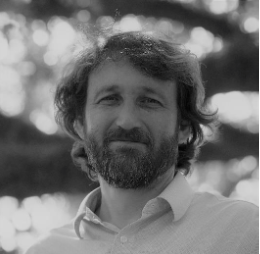
Contact Sumiji Takahashi
Email sutakahashi@ioa.ucla.edu
Phone
Dr. Glenn Wharton
Lore and Gerald Cunard Chair, UCLA/Getty Program in the Conservation of Archaeological and Ethnographic Materials, Cotsen Institute of Archaeology, UCLA
Wednesday February 10th, 12:00pm (PT)
The community-based conservation of the Kamehameha I sculpture on the island of Hawai’i shows how

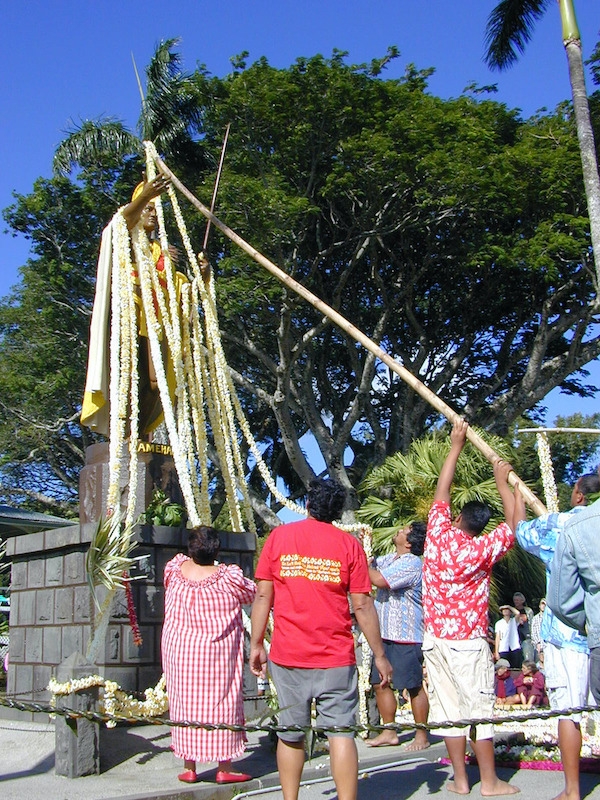 local residents can engage in negotiating the meaning of cultural heritage and affect how their past is represented. Professor Wharton will discuss his three-year collaboration with residents in a semi-rural Hawaiian community to research the material and social history of the sculpture, leading to a community decision about how to conserve it. The Kamehameha I sculpture was commissioned in 1878 to commemorate Captain Cook’s “discovery” of the Hawaiian Islands and promote a western style monarchy. Modeled in the image of a Roman emperor while wearing highly symbolic feathered garments, the figure has come to function as a spiritual, economic, educational, cultural, and political object. The participatory project aimed not only to conserve the painted brass sculpture, but also to enable a process of local control over narratives of the Native Hawaiian past. Wharton's ethnographic research reveals tensions that exist within the multicultural, post-plantation community, as local residents voiced notions of what it means to be Hawaiian and what stories should be told about the Native Hawaiian past.
local residents can engage in negotiating the meaning of cultural heritage and affect how their past is represented. Professor Wharton will discuss his three-year collaboration with residents in a semi-rural Hawaiian community to research the material and social history of the sculpture, leading to a community decision about how to conserve it. The Kamehameha I sculpture was commissioned in 1878 to commemorate Captain Cook’s “discovery” of the Hawaiian Islands and promote a western style monarchy. Modeled in the image of a Roman emperor while wearing highly symbolic feathered garments, the figure has come to function as a spiritual, economic, educational, cultural, and political object. The participatory project aimed not only to conserve the painted brass sculpture, but also to enable a process of local control over narratives of the Native Hawaiian past. Wharton's ethnographic research reveals tensions that exist within the multicultural, post-plantation community, as local residents voiced notions of what it means to be Hawaiian and what stories should be told about the Native Hawaiian past.
Register for this Cotsen Virtual Pizza Talk here! You will receive instructions on viewing the talk after registering.
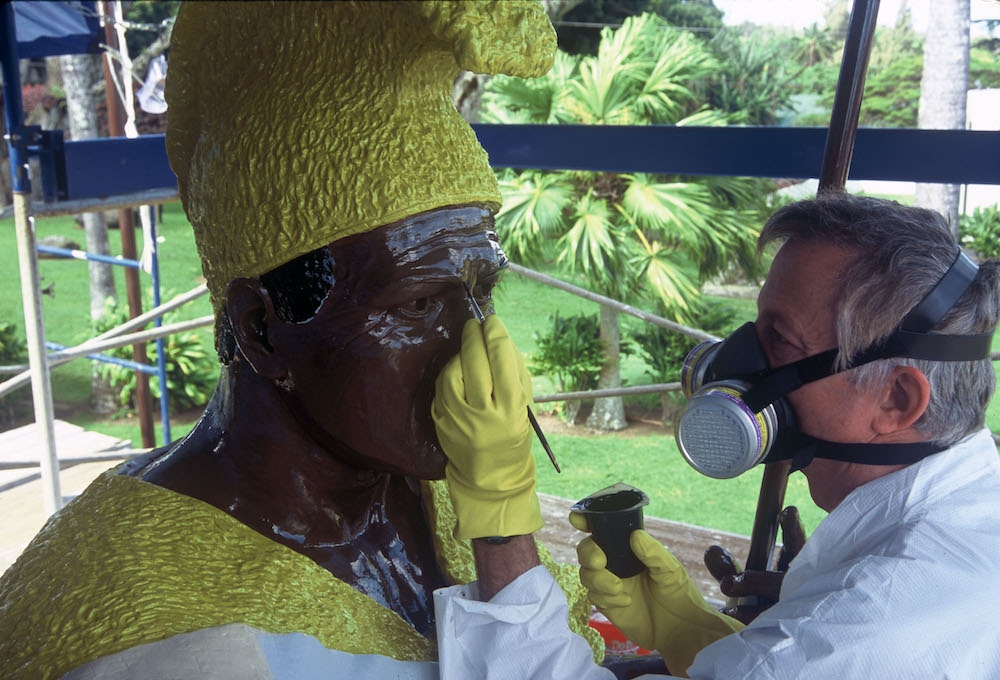
Contact Sumiji Takahashi
Email sutakahashi@ioa.ucla.edu
Phone
Anna Funke
Conservator, Warren Lasch Conservation Center, Clemson University
February 3rd, Wednesday 12:00pm (PT)
The Warren Lasch Conservation Center has been working on the H.L. Hunley submarine since it was 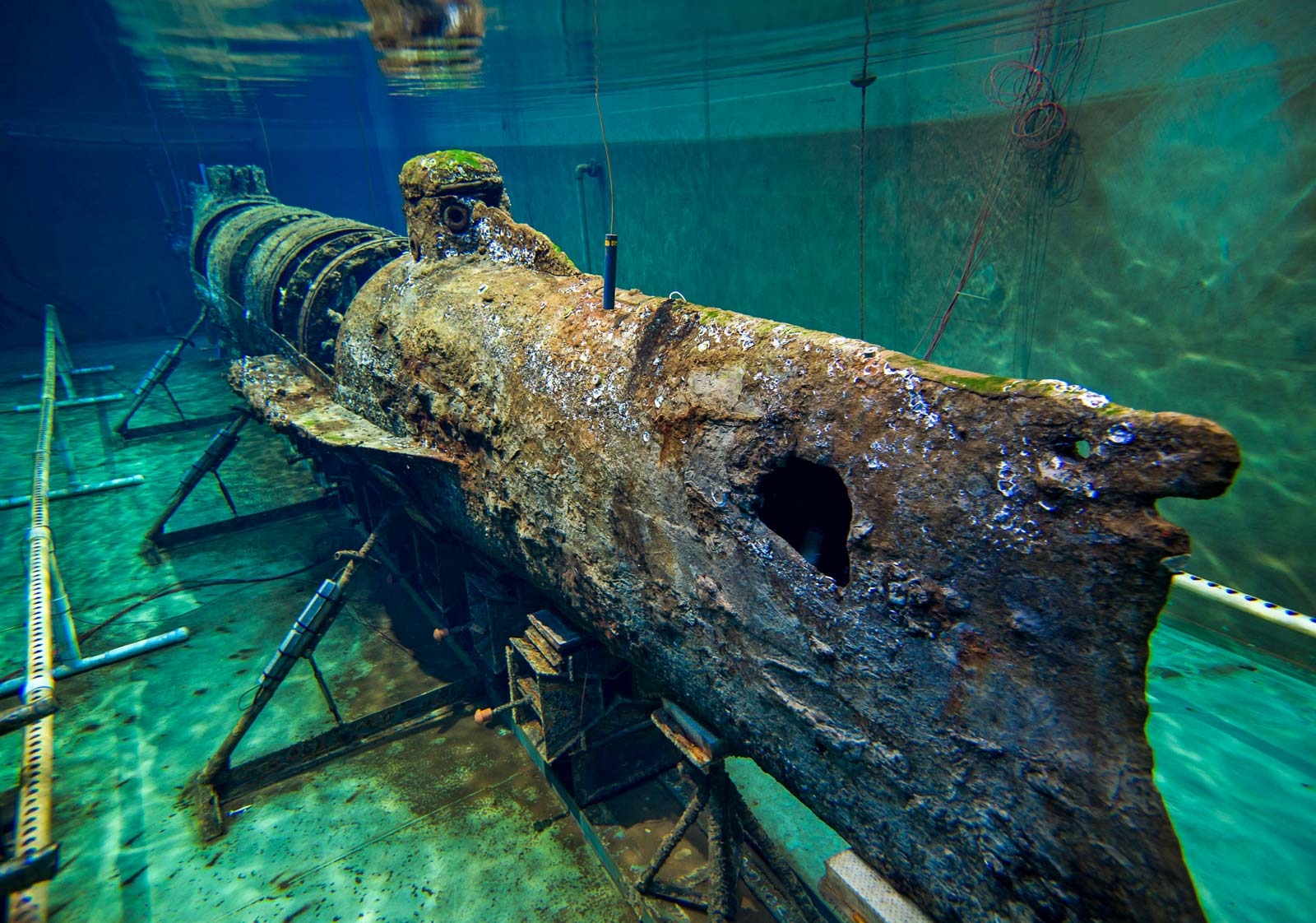 raised from Charleston Harbor in 2000. Renown for being the first successful combat submarine, it was designed to break the blockade of Charleston, in the later years of the Civil War. The archaeological work on the submarine has provided fascinating insights into the military, social and technological history of the time. Now that the excavations are largely completed, the project is primarily focused on the complex conservation process to prepare the submarine for broader public display. This talk will give an overview of the history of the submarine itself as well as the interdisciplinary project that has been built up around it.
raised from Charleston Harbor in 2000. Renown for being the first successful combat submarine, it was designed to break the blockade of Charleston, in the later years of the Civil War. The archaeological work on the submarine has provided fascinating insights into the military, social and technological history of the time. Now that the excavations are largely completed, the project is primarily focused on the complex conservation process to prepare the submarine for broader public display. This talk will give an overview of the history of the submarine itself as well as the interdisciplinary project that has been built up around it.
Register for this Cotsen Virtual Pizza Talk here! You will receive instructions on viewing the talk after registering.
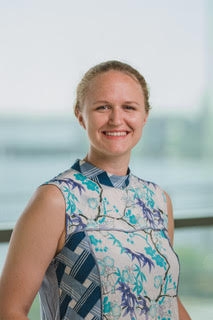
Contact Sumiji Takahashi
Email sutakahashi@ioa.ucla.edu
Phone
Dr. Tiffany Fryer
Cotsen Postdoctoral Fellow, Princeton Society of Fellows, Princeton University
Wednesday January 27th, 12:00pm (PT)
Register for this Cotsen Virtual Pizza Talk here! You will receive instructions on viewing the talk after registering.
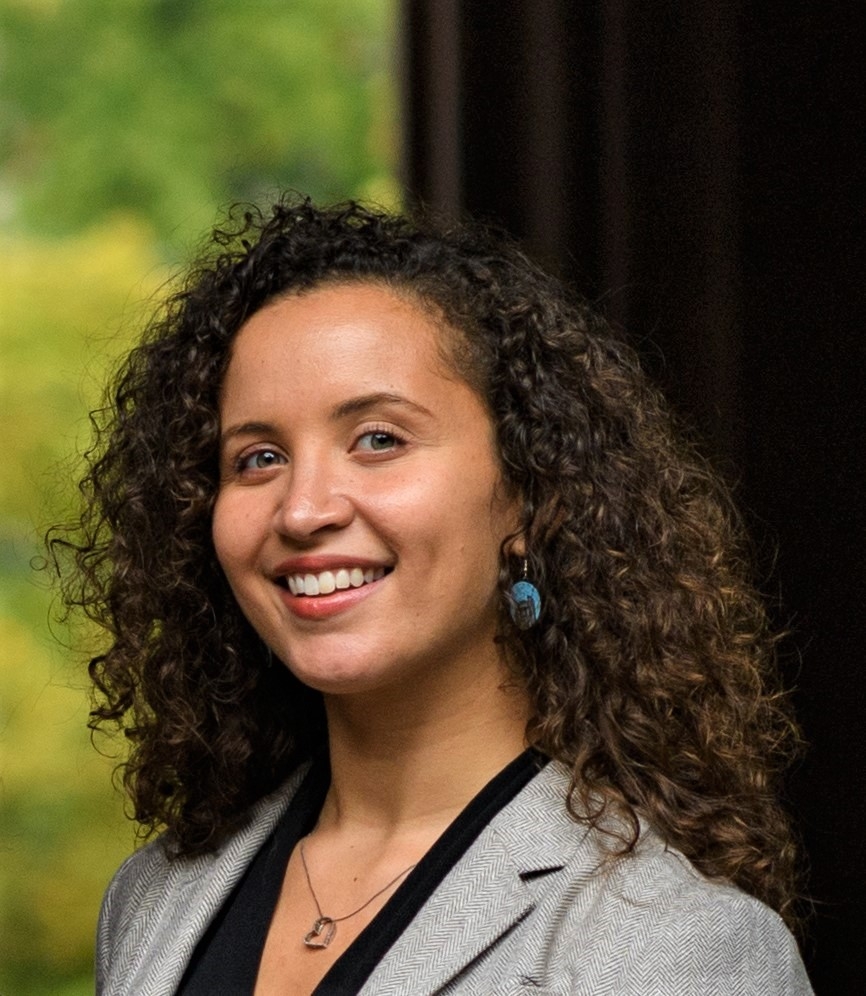
Contact Sumiji Takahashi
Email sutakahashi@ioa.ucla.edu
Phone
Marci J. Burton, Mellon Conservation Fellow, Fowler Museum; Carlee Forbes, Mellon Curatorial Fellow, Fowler Museum; Erica P. Jones, Associate Curator of African Arts, Fowler Museum
Wednesday, December 9th, 12:00pm - 1:00pm PT
Akan-speaking communities on the Gold Coast (modern-day Ghana) have long been home to a vibrant brass-casting culture. From the 15th century, brass-casting focused on producing equipment for the local gold trade: boxes, scales, and weights. Weights cast from copper alloy, known colloquially as gold weights, were made in two varieties: smaller geometric ones seemingly used as the counterbalance for weighing gold, and figurative models that referenced Akan daily life, proverbs, and stories. In the late nineteenth and early twentieth centuries, these weights were simultaneously used to weigh gold while also exchanged as tourist souvenirs.
This presentation considers a group of 449 copper-alloy objects in the Fowler’s Sir Henry Wellcome Collection. A Fowler team has been examining these weights, their histories, material compositions, and meanings. Central to the study of these objects has been analysis with Portable X-ray Fluorescence (pXRF) to determine their elemental compositions. Furthermore, measurements of mass and analysis of modifications (additions/reductions) contribute to ongoing efforts in the field to reconstruct Akan weight-systems. The collective results provide insights to address research questions of materiality, intended use, African art markets, and colonial-era collecting.
Register for this Cotsen Virtual Pizza Talk here! You will receive instructions on viewing the talk after registering.
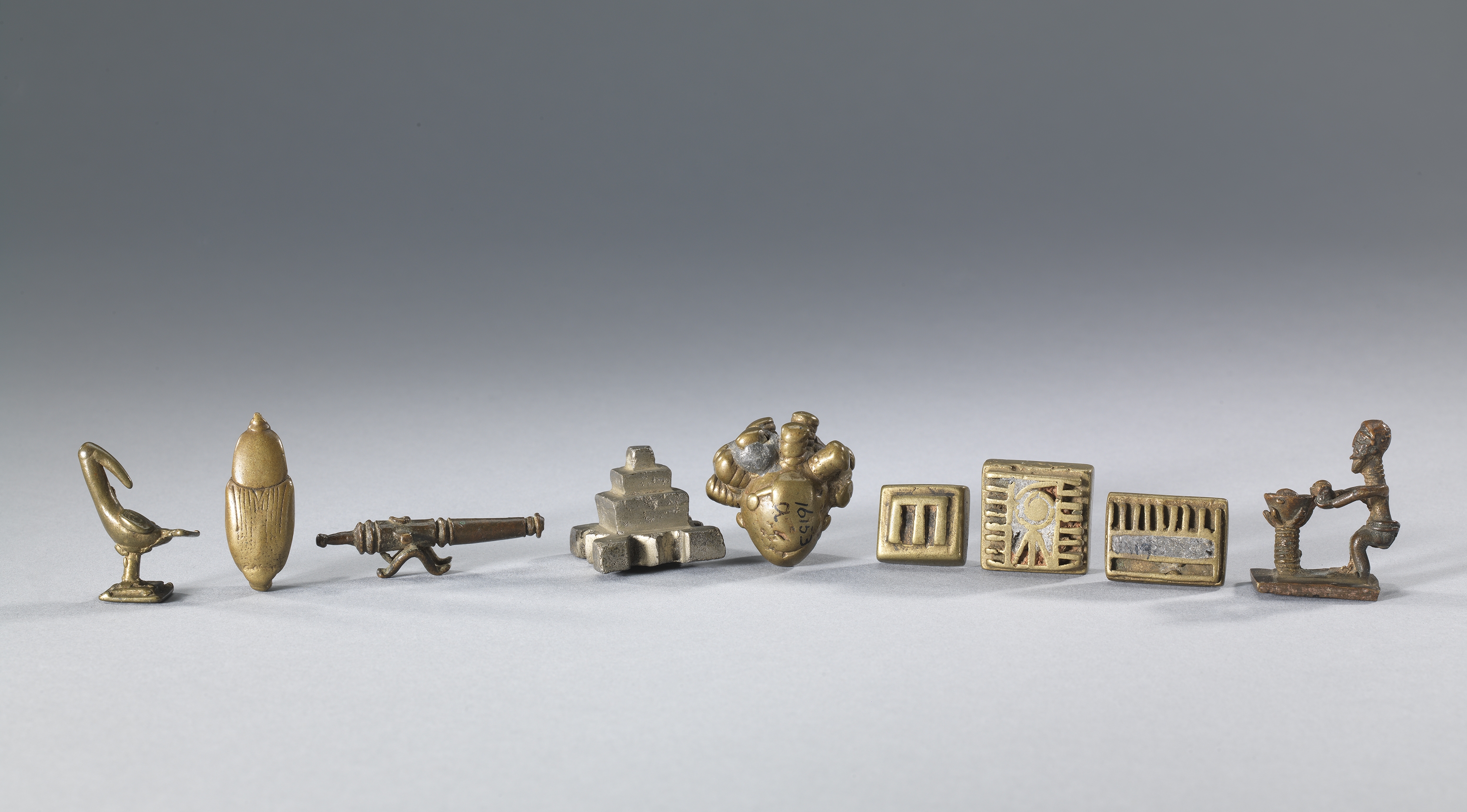
Image courtesy of Fowler Wellcome Team
Contact Sumiji Takahashi
Email sutakahashi@ioa.ucla.edu
Phone
Dr. Tracie Mayfield, Lecturer, Department of Anthropology, University of Southern California
Wednesday, December 2nd, 12:00pm - 1:00pm PT
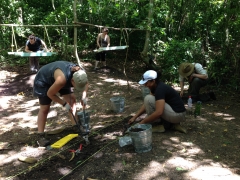 During the nineteenth-century, Latin America was a hotbed of trade and commerce driven principally by extractive industries such as agriculture (principally sugar) and hardwood collection. Such ventures required large injections of capital into the creation and maintenance of productive landscapes as well as for hiring, housing, and feeding the workers who provided labor and management. This presentation will explore two such sites in Belize. Lamanai, an inland site, which is located in what is now the Orange Walk District of northwestern Belize and San Pedro Town, which is located off the coast of Belize on Ambergris Caye. During the nineteenth-century British colonists established settlements at these sites: at Lamanai, to plant sugar cane and harvest logwood and mahogany and, on Ambergris Caye to cultivate a coconut plantation. Along with wild fauna, chicken, beef, and bottled, canned, or barreled products such as soda water, salted pork, and potted meat, the residents of nineteenth-century Lamanai and San Pedro Town were also active consumers of tobacco and bottled alcoholic beverages. In addition, earned labor money was used to purchase bottled medicines, health and hygiene products (e.g. chamber pots), and wearable objects such as buttons and boot heels. Here we compare and contrast these two contemporary sites, situated in very different landscapes, but both within the Latin American, British colonial-industrial complex.
During the nineteenth-century, Latin America was a hotbed of trade and commerce driven principally by extractive industries such as agriculture (principally sugar) and hardwood collection. Such ventures required large injections of capital into the creation and maintenance of productive landscapes as well as for hiring, housing, and feeding the workers who provided labor and management. This presentation will explore two such sites in Belize. Lamanai, an inland site, which is located in what is now the Orange Walk District of northwestern Belize and San Pedro Town, which is located off the coast of Belize on Ambergris Caye. During the nineteenth-century British colonists established settlements at these sites: at Lamanai, to plant sugar cane and harvest logwood and mahogany and, on Ambergris Caye to cultivate a coconut plantation. Along with wild fauna, chicken, beef, and bottled, canned, or barreled products such as soda water, salted pork, and potted meat, the residents of nineteenth-century Lamanai and San Pedro Town were also active consumers of tobacco and bottled alcoholic beverages. In addition, earned labor money was used to purchase bottled medicines, health and hygiene products (e.g. chamber pots), and wearable objects such as buttons and boot heels. Here we compare and contrast these two contemporary sites, situated in very different landscapes, but both within the Latin American, British colonial-industrial complex. 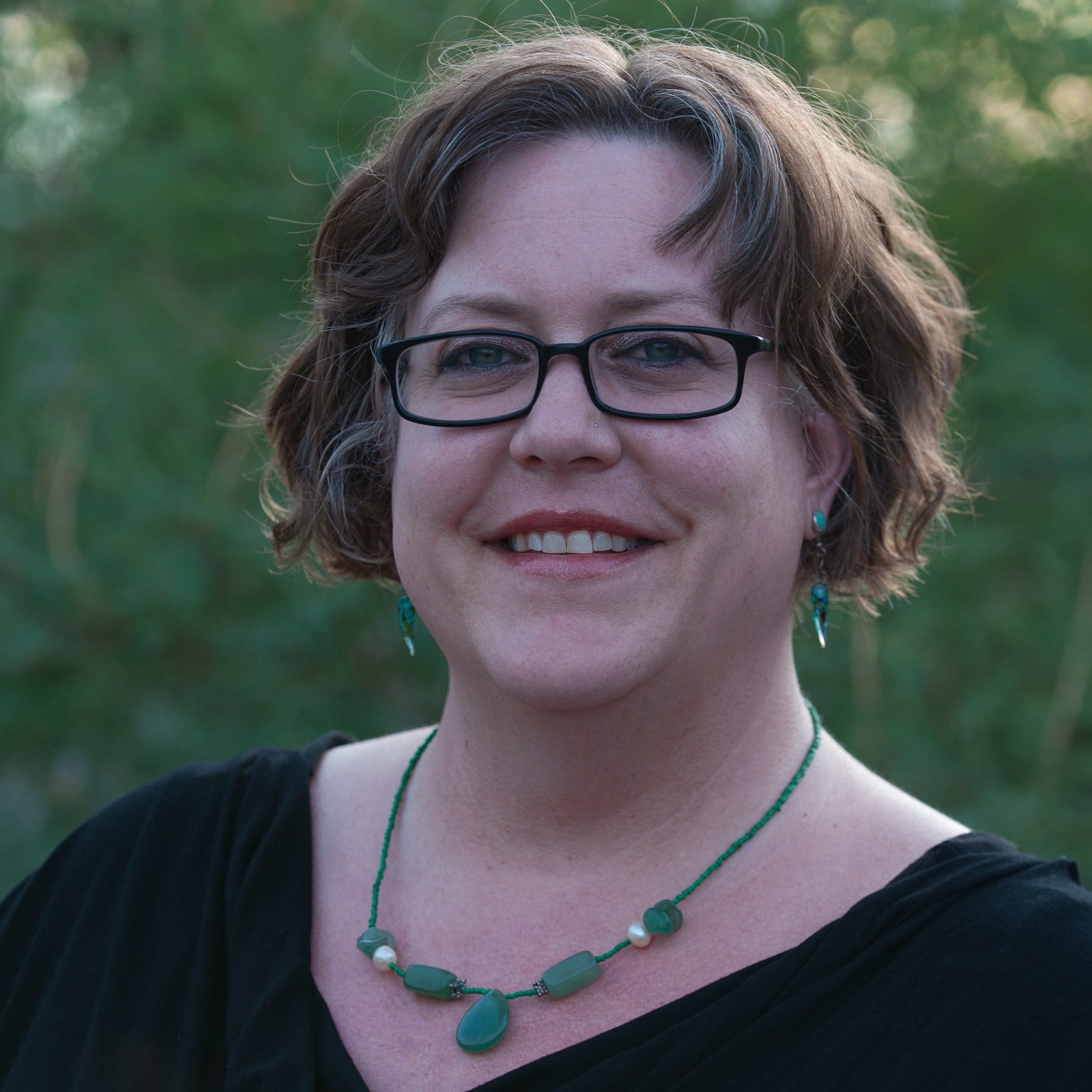
Register for this Cotsen Virtual Pizza Talk here! You will receive instructions on viewing the talk after registering.
Contact Sumiji Takahashi
Email sutakahashi@ioa.ucla.edu
Phone
Almoatz-bellah Elshahawi, Conservator, Grand Egyptian Museum
Wednesday, November 18th, 12:00pm - 1:00pm PT
Acquired in 1955 by the J. Paul Getty Museum an Egyptian bronze cat was thought to be a fake. Authenticity questions initially arose from the presence of several odd repairs on the cat’s tail. Additionally, the surface appeared stripped and was very glossy giving it an artificial look and contributing to its suspicious appearance. Removal of the bronze from its historic wooden base revealed the signature of a 19th century British restorer. Comparisons of the interior to the exterior bronze surface indicate that the cat had been aggressively cleaned leaving a smooth and atypical corrosion pattern on the surface. A technical study of the cat using visible and microscopic examination, x radiography, metallography, x ray fluorescence spectroscopy and most significantly, thermoluminescence dating of the core material within the head, confirmed the cat’s authenticity.
Register for this Cotsen Virtual Pizza Talk here! You will receive instructions on viewing the talk after registering.
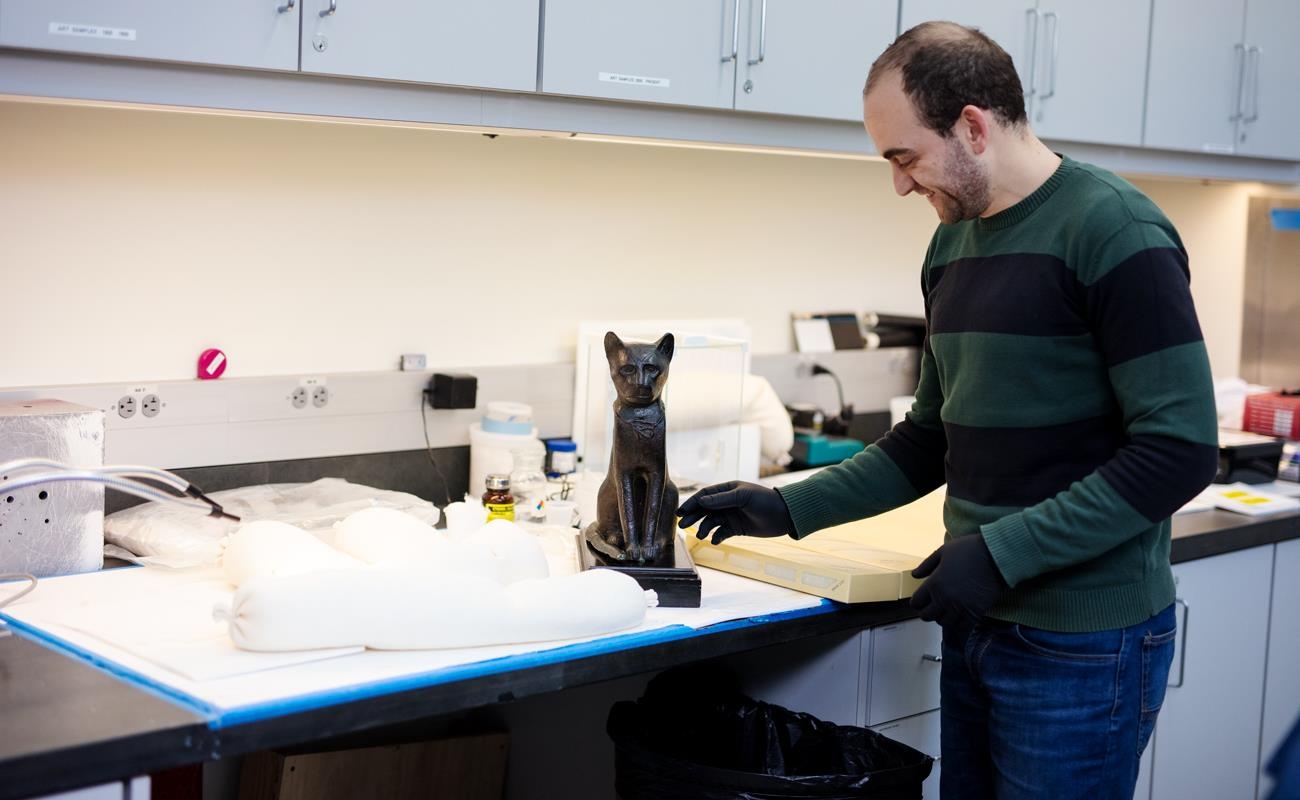
Contact Sumiji Takahashi
Email sutakahashi@ioa.ucla.edu
Phone
Dr. Danielle Candelora, Assistant Professor, History Department, SUNY Courtland
Wednesday, November 4th, 12:00pm - 1:00pm PT
The Hyksos are often set up as the boogeymen of ancient Egypt - after a violent invasion, these foreign despots ruled the North of Egypt with an iron first, while a native Egyptian family in the South fought for Egypt's liberation. However, archaeological investigation and the reanalysis of ancient texts shows that this narrative is simply political rhetoric created by the Egyptian kings to legitimize their own rule. In reality, the Hyksos were creatively strategic about the display of various aspects of their identities. To become fully Egyptian was never the goal; instead they actively maintained and advertised elements of their origins in order to support their ties to kinship and trade networks in West Asia. These kings were cosmopolitan diplomats who corresponded with much of the Near East and Eastern Mediterranean, and whose capital city was a titan of trade. They adopted and adapted elements of traditional Egyptian kingship, but negotiated these traditions with a West Asian spin, creating a rule uniquely suited to the eastern Delta. Further investigation of the social memory of these kings has even demonstrated that they were considered legitimate kings and the major power in Second Intermediate Period Egypt. In fact, the Hyksos and the West Asian immigrants of the period had a massive impact on Egyptian society, culture, and conceptions of kingship. The archetype of New Kingdom Egypt, considered the apex of ancient Egyptian society, would not have been possible without the influence of these West Asian immigrants or the rule of the Hyksos.

Register for this Cotsen Virtual Pizza Talk here! You will receive instructions on viewing the talk after registering.
Contact Sumiji Takahashi
Email sutakahashi@ioa.ucla.edu
Phone
Dr. Christine Lee, Assistant Professor, Department of Anthropology, California State Los Angeles
Wednesday, October 28th, 12:00pm - 1:00pm PT
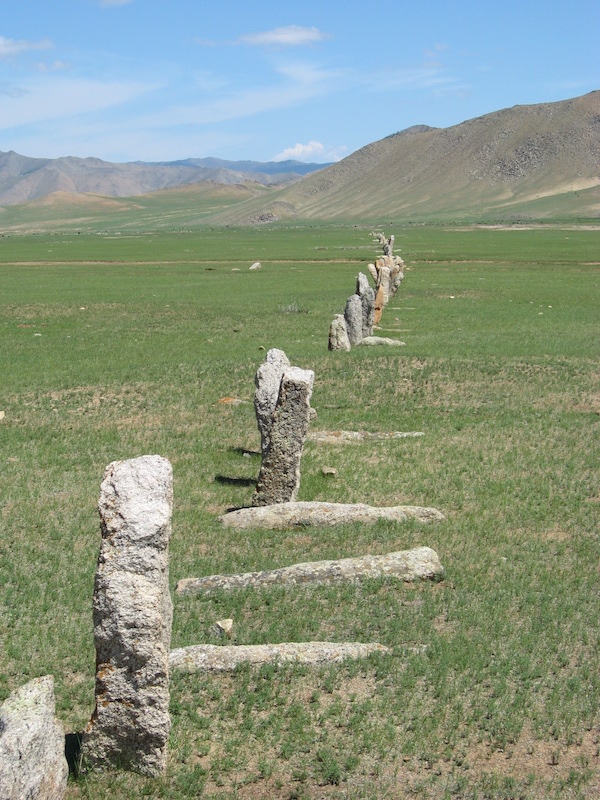 Four archaeological sites along the western frontier of China and Mongolia were analyzed for cranial trauma patterns. These patterns were then used to determine levels of violence, who were the participants, and if certain individuals were singled out as specific targets. In ancient times all of these sites were connected by the Silk Road. The sample from Yingpan (206 BC-420 AD), Yanghai (475 BC-220AD), Nileke (550-221 BC), and Chandman (700-400BC) totaled 275 individuals. Yingpan and Yanghai were agricultural oasis states in the Tarim Basin. Nileke and Chandman were nomadic pastoralists located along the Altai mountains. Trauma was recorded for location on the skull, type (blunt force, sharp force, or high velocity), and cause (interpersonal, warfare, or other). The total population percentages for trauma were Yingpan 27%, Yanghai 23%, Chandman 15%, and Nileke 20%. However, this does not give an accurate picture of the level of daily violence experienced. The likelihood of an individual experiencing a violent episode causing death or disability was highest at Chandman and the lowest at Yingpan. So how a population and it’s individuals were the perpetrators or victims of aggression needs closer examination. One site has an unusual pattern where men, women and children have broken noses. Two sites have evidence of trephination or surgery after devastating sword blows or high velocity projectiles. There is one incidence of scalping. Finally several individual had their noses cut off. This intentional mutilation of the face was a capital punishment at the time. This talk will explore what were the social and cultural factors which could have caused these specific patterns.
Four archaeological sites along the western frontier of China and Mongolia were analyzed for cranial trauma patterns. These patterns were then used to determine levels of violence, who were the participants, and if certain individuals were singled out as specific targets. In ancient times all of these sites were connected by the Silk Road. The sample from Yingpan (206 BC-420 AD), Yanghai (475 BC-220AD), Nileke (550-221 BC), and Chandman (700-400BC) totaled 275 individuals. Yingpan and Yanghai were agricultural oasis states in the Tarim Basin. Nileke and Chandman were nomadic pastoralists located along the Altai mountains. Trauma was recorded for location on the skull, type (blunt force, sharp force, or high velocity), and cause (interpersonal, warfare, or other). The total population percentages for trauma were Yingpan 27%, Yanghai 23%, Chandman 15%, and Nileke 20%. However, this does not give an accurate picture of the level of daily violence experienced. The likelihood of an individual experiencing a violent episode causing death or disability was highest at Chandman and the lowest at Yingpan. So how a population and it’s individuals were the perpetrators or victims of aggression needs closer examination. One site has an unusual pattern where men, women and children have broken noses. Two sites have evidence of trephination or surgery after devastating sword blows or high velocity projectiles. There is one incidence of scalping. Finally several individual had their noses cut off. This intentional mutilation of the face was a capital punishment at the time. This talk will explore what were the social and cultural factors which could have caused these specific patterns.
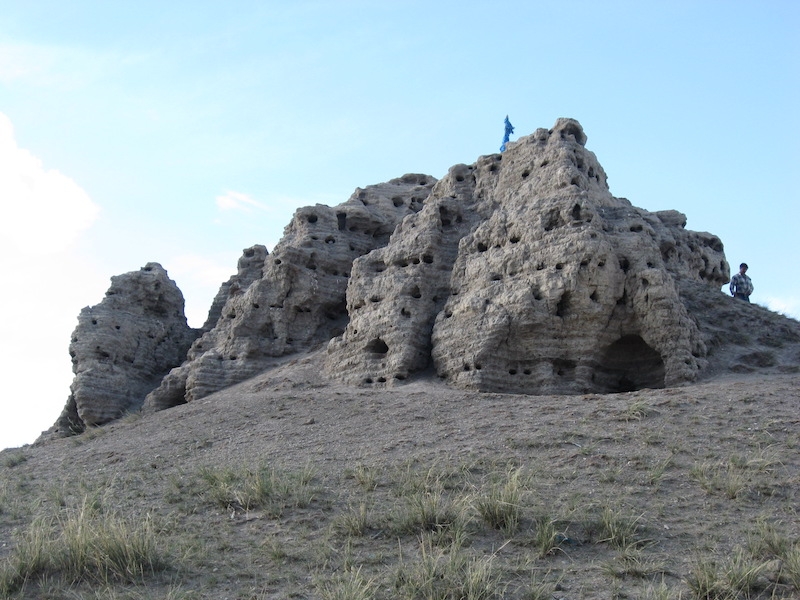
Register for this Cotsen Virtual Pizza Talk here! You will receive instructions on viewing the talk after registering.
Contact Sumiji Takahashi
Email sutakahashi@ioa.ucla.edu
Phone
- ‹ previous
- 8 of 22
- next ›


